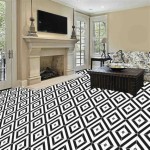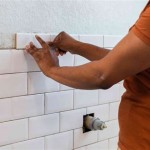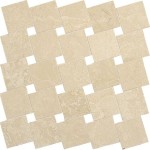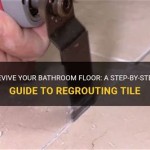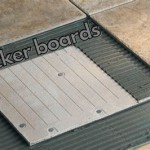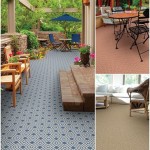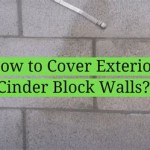What Board Can You Tile On? A Comprehensive Guide
Tiling is a popular method for enhancing the aesthetic appeal and durability of surfaces, particularly in bathrooms, kitchens, and other areas prone to moisture. However, directly applying tiles to structural framing is generally not feasible, requiring the use of a suitable backer board substrate. Choosing the correct backer board is crucial for a successful and long-lasting tile installation. Different types of backer boards possess varying properties, making them suitable for specific applications and environments. This article provides a detailed overview of the different types of backer boards that can be tiled on, highlighting their characteristics, advantages, and disadvantages, enabling informed decisions regarding material selection.
The selection of a viable backer board depends on multiple factors, including the intended location (walls, floors, or countertops), moisture levels, the type and size of tile being used, and budgetary constraints. Failing to choose the appropriate backer board can lead to tile cracking, grout failure, water damage, and costly repairs. Consequently, a thorough understanding of the available options and their specific properties is essential for achieving a durable and aesthetically pleasing tiled surface.
Cement Board: The Industry Standard
Cement board, often referred to as cement backer board (CBU), is a widely used underlayment for tile applications. It's composed of cement reinforced with fiberglass mesh, creating a rigid and water-resistant substrate. Its primary advantage lies in its exceptional strength and durability, making it suitable for both wall and floor applications, even in high-moisture environments like shower stalls and bathrooms. Cement board is available in various thicknesses, typically ranging from ¼ inch to ¾ inch, allowing for flexibility in matching existing floor heights or accommodating specific tile thicknesses.
One key characteristic of cement board is its resistance to moisture and mold growth. Unlike plywood or drywall, cement board will not rot, warp, or deteriorate when exposed to water. This inherent water resistance makes it an ideal choice for wet areas where water penetration is a significant concern. Moreover, its inorganic composition makes it impervious to mold and mildew, preventing the development of unhealthy conditions that can compromise the integrity of the tiled surface.
Installation of cement board generally involves cutting the board to size with a utility knife or saw, attaching it to the framing studs or subfloor with screws or nails, and taping the seams with alkali-resistant mesh tape embedded in thin-set mortar. Proper seam treatment is crucial to prevent water from seeping behind the board and damaging the underlying structure. While cement board offers excellent performance, it can be relatively heavy and dusty to work with. Protective gear, such as a dust mask and gloves, is recommended during handling and installation.
Cement board is compatible with a wide range of tile types, including ceramic, porcelain, and natural stone. Its rough surface provides an excellent bond for thin-set mortar, ensuring a secure and long-lasting tile installation. For heavy or large-format tiles, a thicker cement board may be necessary to provide adequate support and prevent deflection. Furthermore, cement board can be used in conjunction with waterproofing membranes to provide an even greater level of protection against moisture intrusion.
Waterproof Foam Boards: Lightweight Alternatives
Waterproof foam boards represent a relatively newer alternative to traditional cement board. These boards are typically made from extruded polystyrene (XPS) or expanded polystyrene (EPS) foam, coated with a cementitious surface on both sides. Their key advantage is their lightweight nature, making them easier to handle and install compared to cement board. This characteristic is particularly beneficial in situations where weight is a concern, such as on upper floors or in renovations where minimizing structural load is important.
In addition to being lightweight, waterproof foam boards offer excellent insulation properties. The foam core acts as a thermal barrier, helping to reduce heat loss through walls and floors. This can contribute to energy savings and improved comfort levels. Furthermore, the foam core also provides sound dampening, reducing noise transmission between rooms. Waterproof foam boards are inherently waterproof, eliminating the need for a separate waterproofing membrane in many applications. The cementitious coating provides a suitable surface for bonding with thin-set mortar, ensuring a strong and durable tile installation.
Installation of waterproof foam boards is similar to that of cement board, involving cutting the board to size, attaching it to the framing studs or subfloor with screws and washers, and taping the seams with alkali-resistant mesh tape embedded in thin-set mortar. The use of washers is essential to prevent the screws from pulling through the foam core. Special fasteners and accessories are often available from the manufacturer to ensure proper installation and maintain the integrity of the waterproofing system. While waterproof foam boards offer several advantages, they may be more expensive than cement board.
Waterproof foam boards are suitable for a variety of tile applications, including walls, floors, and shower stalls. They are particularly well-suited for use in steam showers and other high-moisture environments where superior waterproofing is required. However, it is important to choose a foam board with sufficient compressive strength to support the intended load. For heavy or large-format tiles, a thicker foam board or additional reinforcement may be necessary. It's also important to check the manufacturer's specifications to ensure compatibility with the specific type of tile and thin-set mortar being used.
Gypsum Board (Drywall): Limited Applications
Standard gypsum board, commonly known as drywall, is generally not recommended as a tile substrate in wet areas. While it is a cost-effective and readily available material, drywall is highly susceptible to moisture damage. When exposed to water, drywall can quickly absorb moisture, leading to swelling, warping, and eventual disintegration. This can result in tile cracking, grout failure, and the growth of mold and mildew. However, moisture-resistant drywall, often referred to as "green board" or "blue board," offers improved water resistance compared to standard drywall.
Moisture-resistant drywall has a water-resistant paper facing that helps to repel moisture. While it is suitable for use in areas with occasional moisture exposure, such as kitchens and powder rooms, it is not recommended for use in direct water contact areas like shower stalls or tub surrounds. Even with its water-resistant properties, moisture-resistant drywall can still be damaged by prolonged exposure to moisture. For wet areas, cement board or waterproof foam boards are significantly more reliable options.
If gypsum board is used as a tile substrate, proper preparation is crucial. The surface must be clean, dry, and free of any loose paint or debris. A primer specifically designed for use with tile should be applied to improve adhesion. The use of a waterproofing membrane over the gypsum board is highly recommended, especially in areas prone to moisture. The membrane will act as a barrier, preventing water from penetrating the gypsum board and causing damage.
When tiling over gypsum board, it is important to use a modified thin-set mortar that is specifically designed for use with gypsum-based substrates. Standard thin-set mortars may not bond properly to gypsum board, leading to tile failure. The tile must be installed according to the manufacturer's instructions, ensuring proper coverage and alignment. Regular inspections should be performed to check for any signs of water damage or tile failure. If any issues are detected, they should be addressed promptly to prevent further damage.
Plywood: Alternatives for Specific Situations
Plywood, while typically associated with structural applications, can be used as a tile substrate in specific situations, primarily on floors. However, it is crucial to use exterior-grade plywood or marine-grade plywood, which are treated to resist moisture damage. Interior-grade plywood is not suitable for tile applications, as it will quickly deteriorate when exposed to water. The plywood must be properly installed, with adequate support and spacing to prevent deflection. Deflection can cause tile cracking and grout failure.
The thickness of the plywood should be determined based on the span between joists and the type of tile being used. A thicker plywood is generally required for larger spans and heavier tiles. The surface of the plywood must be clean, dry, and free of any loose debris. A primer specifically designed for use with tile should be applied to improve adhesion. The use of a crack isolation membrane over the plywood is highly recommended. The membrane will help to prevent cracks in the plywood from transferring to the tile, prolonging the life of the tiled surface.
Prior to tiling, the plywood must be properly prepared to ensure a stable and durable bond. Sanding the surface is recommended to create a rougher texture that promotes better adhesion. All seams and joints should be properly sealed with a flexible sealant to prevent water from penetrating the plywood. It's important to note that plywood will expand and contract with changes in humidity, which can put stress on the tile and grout. The crack isolation membrane helps to accommodate this movement.
When tiling over plywood, use a flexible, polymer-modified thin-set mortar specifically designed for use with wood substrates. Standard thin-set mortars may not be able to accommodate the movement of the plywood, leading to tile failure. The tile should be installed following the manufacturer's instructions, ensuring proper coverage and alignment. Regular inspections should be performed to check for any signs of water damage, cracking, or grout failure. While plywood can be a viable option for certain floor applications, cement board or waterproof foam boards are often preferred due to their superior water resistance and dimensional stability.

Blog Expert Advice How To Tile Onto Wood Plywood Or Chipboard

Blog Expert Advice How To Tile Onto Wood Plywood Or Chipboard

Easily Install Cement Board To Prep For Tile Installation

Blog Expert Advice How To Tile Onto Wood Plywood Or Chipboard

Blog Expert Advice How To Tile Onto Wood Plywood Or Chipboard

How To Prepare A Subfloor For Tile Installation The Home Depot

How To Tile Onto Foil Backed Underfloor Heating Boards A Complete Guide

How To Install Cement Backer Board For Floor Tile Installation The Home Depot

Bathroom Mini Renovation Part 4 Painting Tile Board So Pretty Is As Does

How To Prepare A Subfloor For Tile Installation The Home Depot
Related Posts

